Breakdown of a fantasy blacksmith forge art created for Butterflies — a project in which I’m developing a story and the worldbuilding around it.
Software: Clip Studio Paint and Blender.
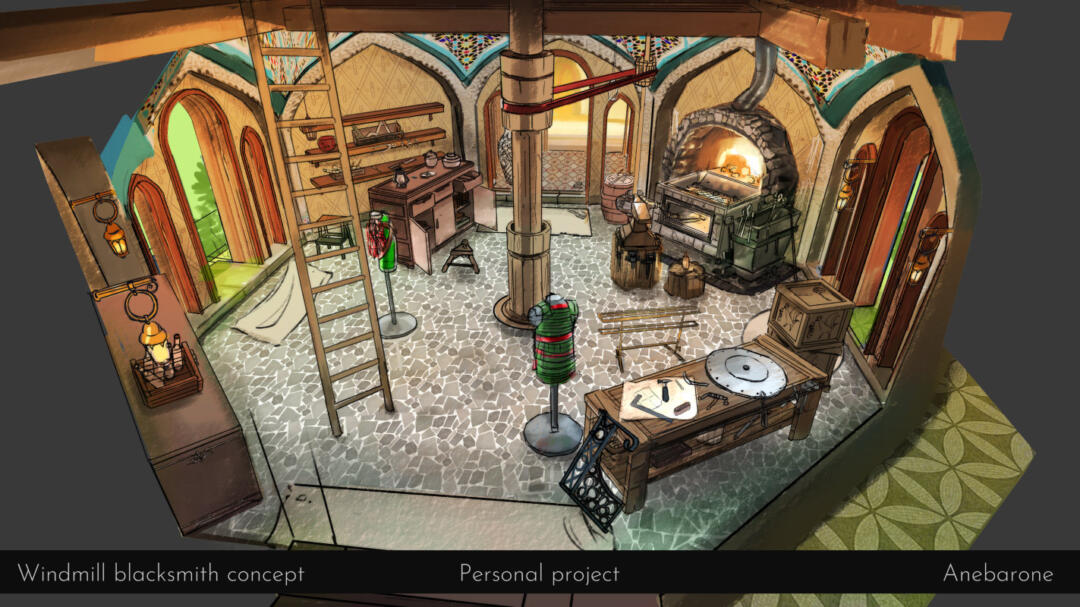
This building is Chew’s workshop, storefront, and home.
The character is specialized in tailoring and blacksmithing, and his windmill’s rooms blend work tools, products, employees’ objects, and Chew’s routine and daily life.
Developing the blacksmith forge
Whenever writing the story I had a mental map of the character’s rooms and town. I brought all those ideas into sketches, making floor plans for the blacksmith forge, located inside a windmill’s tower.
I start by drawing small blue characters and doorways to serve as a scale reference, as I wanted to estimate if a character would fit in a table, chair, corridor, etc. The house has several small rooms and corners, so those references were important to have in mind even before modeling the 3D forge.
Those floor plans consist of the building’s entire first floor, and the forge is painted red in the sketch below. The end of this post has an exterior view of the building as well.

Blender
Once in Blender, I started modeling on top of the floor plans.

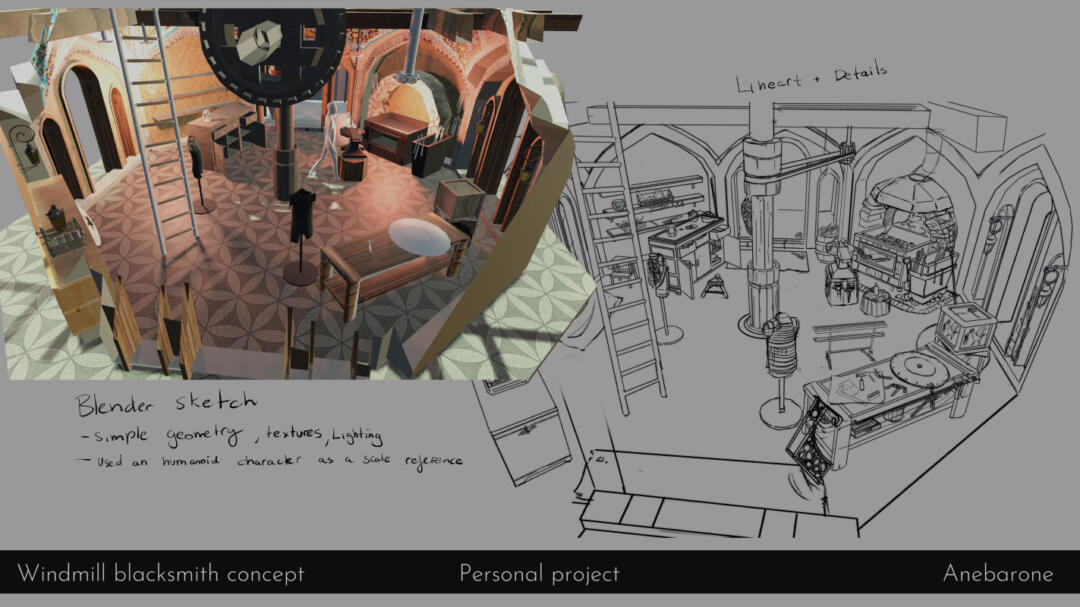
Smaller objects like lamps, armor stands, and tools, were grabbed from Blenderkit!
Building the fantasy forge blower
Since the character lives in a windmill, I wanted an actual use for the building’s structure. Something that would help Chew in his daily life, like milling grains and coffee for cooking, and working.
So I imagine the character came up with a way to automate stoking the fire in his forge, instead of doing the physical work himself or relying on bellows or his employees.
Using photo references of forge blowers operated via a crank, I thought about a fictional adaption in which, instead of using your hands, you’d connect the blower to the windmill’s pole structure, then use rubber bands, rods and wooden attachments to adjust its turning speed. A lever system could also work well.
My reference behind those adjustments to the rotation speed were a system of cranks found in sawing mills!
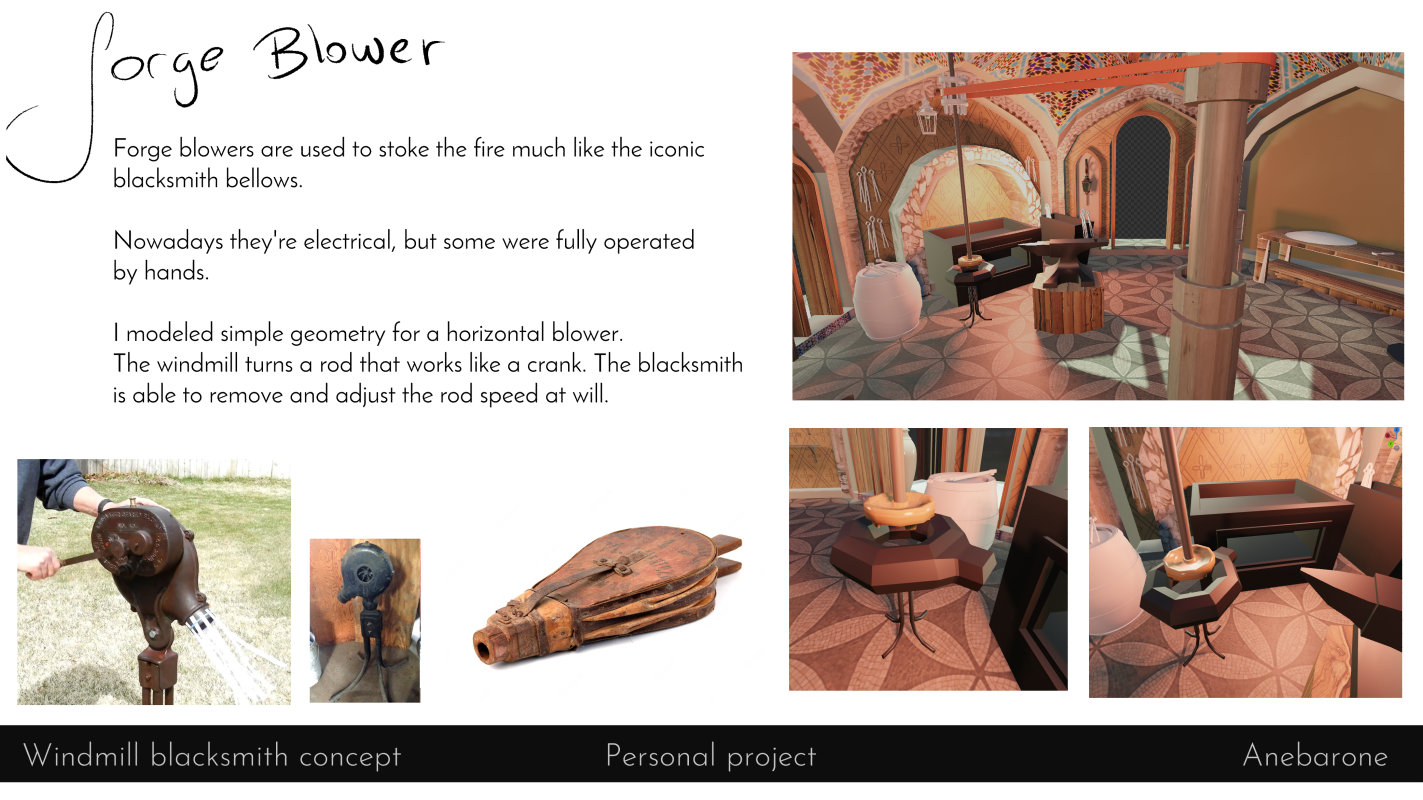
Transcript of the image above
Forge blowers are used to stoke the fire much like the iconic blacksmith bellows. Nowadays they’re electrical, but some were fully operated by hands. I modeled simple geometry for a horizontal blower. The windmill turns a rod that works like a crank. The blacksmith is able to remove and adjust the rod speed at will.
Windmill and blacksmithing references
For about a week I became obsessed with mills. ♥ Here are some great videos I watched as inspiration.
Flour milling example from the Union Mills Museum
Fred Prins shows his polder mill. It’s a beautiful example of using a mill as a home, with its noise, atmosphere, and the adapted storage spaces.
An incredible wind-powered sawmill. It seems like it’s the “Het Jonge Schaap” (The Young Sheep) Mill in the Zaanse Schans, in the Netherlands.
Making flour at the Lurgashall Watermill, in the Weald and Downland Museum in West Sussex.
For further reading and a 3D tour inside a blacksmith shop, there is also the Lacombe Museum virtual exhibition.
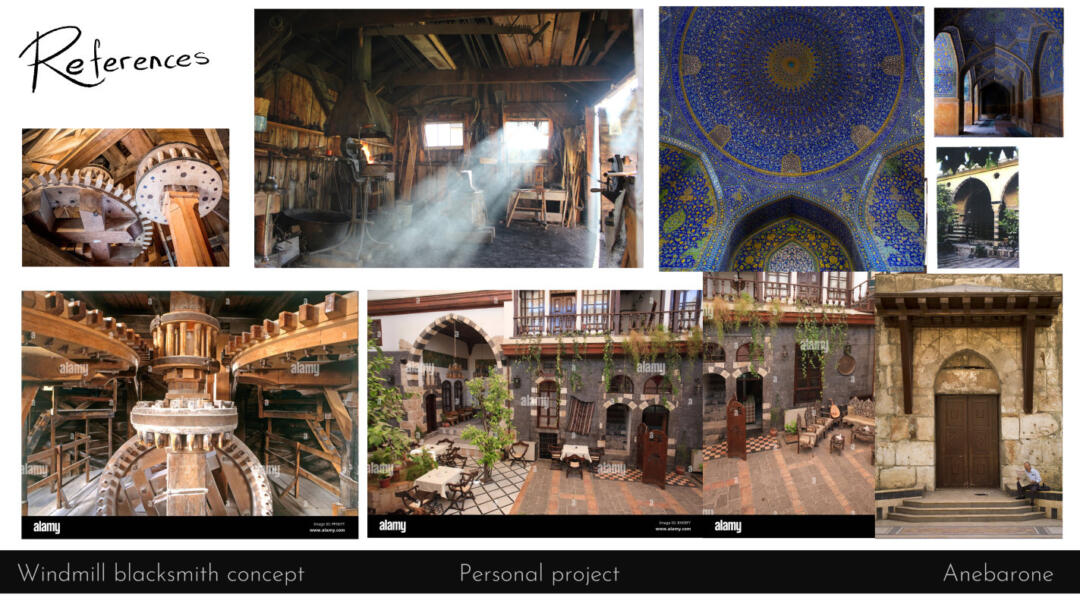
The Borborema palacee concept art follows similar architectural references, as the location is in the same city as this windmill.
More sketches and progress pictures
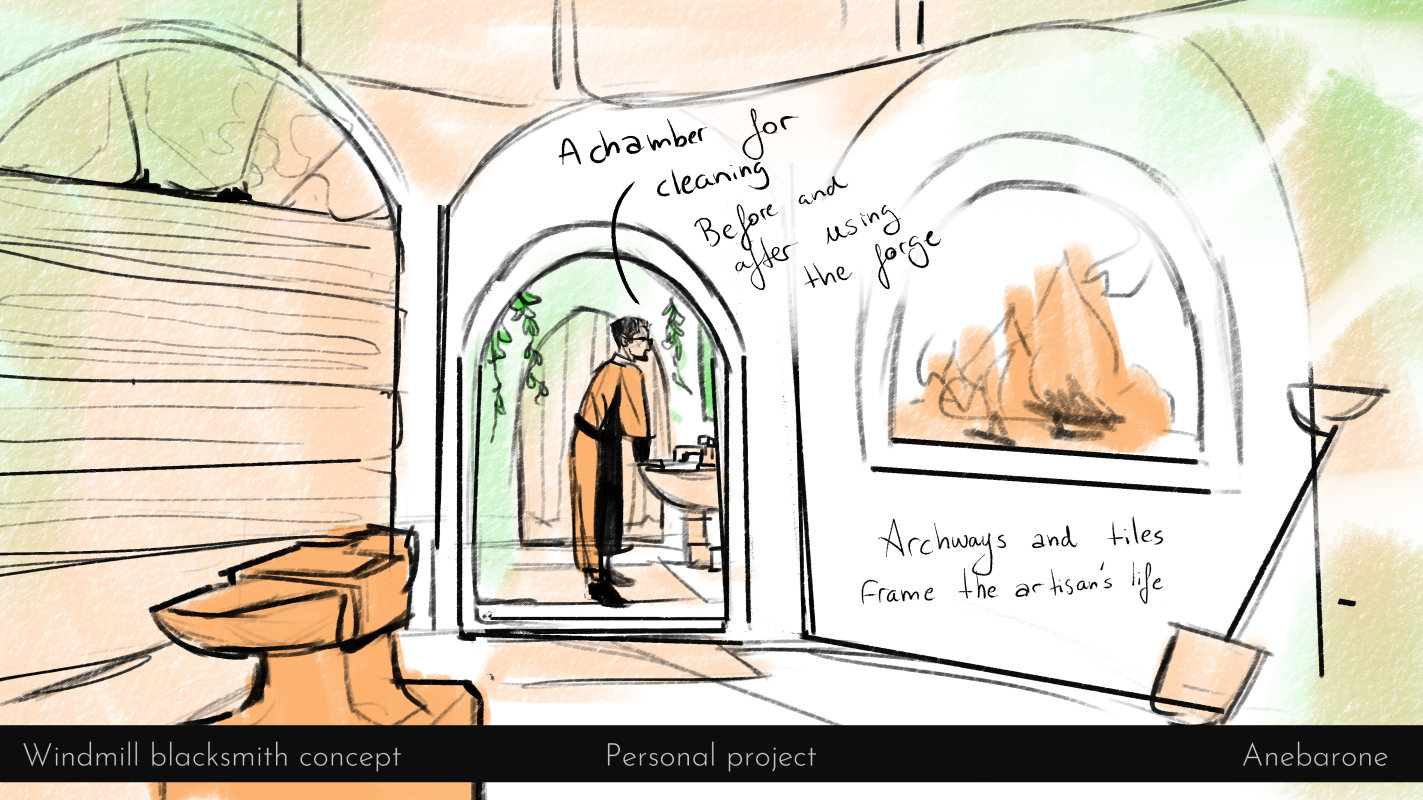
The forge isn’t intricate (it’d be covered in soot!) or richly colored. It isn’t a place of worship. But I wanted to suggest it had other purposes before becoming a workshop, so there’s chipped paint and ceramic tiles from other eras on the ceiling and walls.

A view of the windmill’s external structure and town. I have a breakdown of the town and windmill exterior painting in another post.
Chew
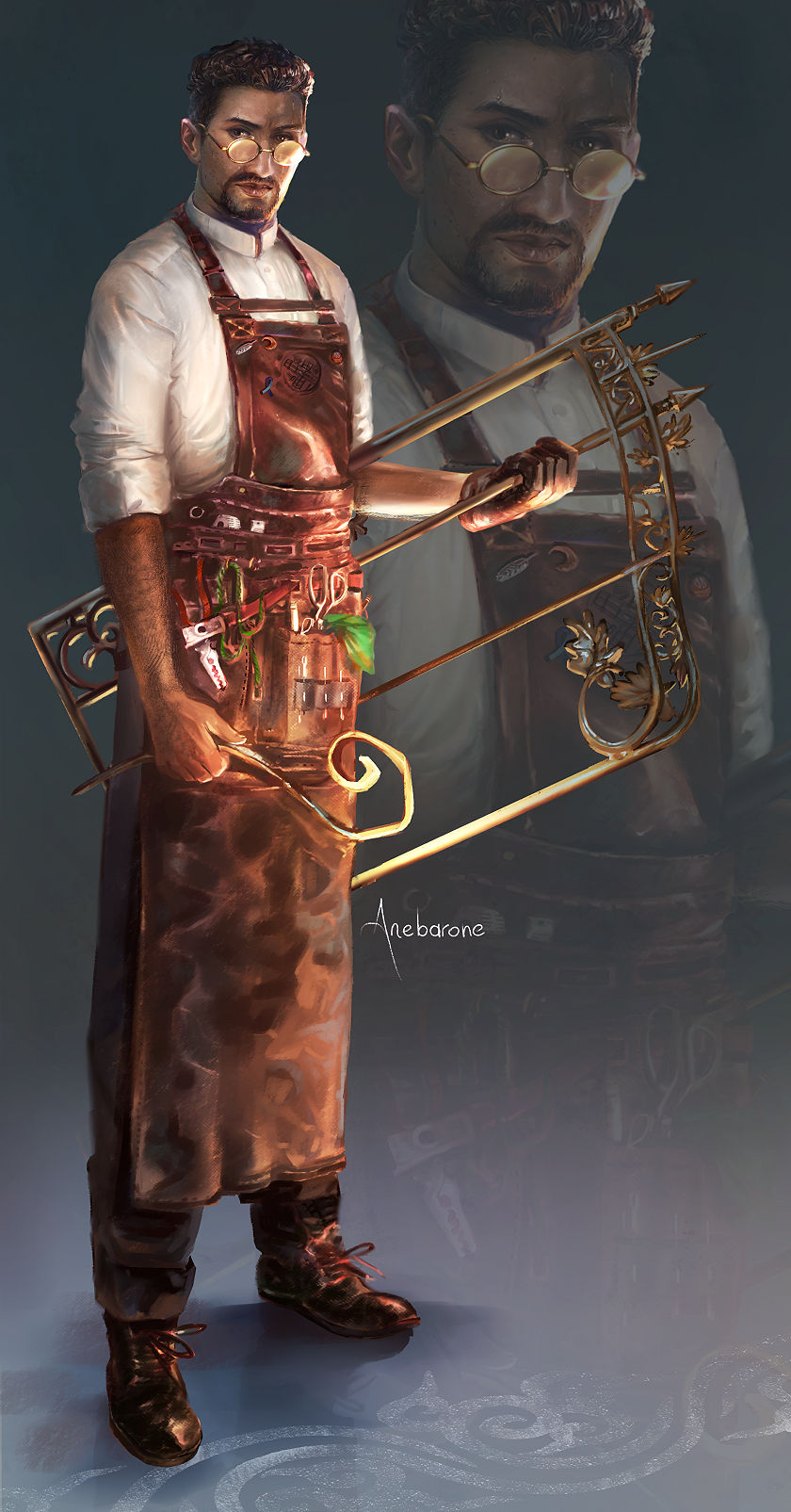
This is a recurrent character in my 2022 pieces. Chew’s concept art breakdown.
Concept art of all characters and creatures in this story.
Bonus
A Twitter thread with more progress pictures taken around the time I was modeling the walls and arches. Enjoy, and thank you!

Leave a Reply